Wow, another year has already come and gone. The first version of WP Fusion was released in January of 2015, so as of this month we’ve been in business for five years. We created WP Fusion as a simple utility to synchronize UserPro membership data with Infusionsoft, and now it’s powering over 3,000 websites. Nuts!
About seven years ago when I was still building one-off websites and plugins, I first stumbled on Pippin Williamson’s Year in Review posts for Easy Digital Downloads (you can check out the latest here). I obviously knew that people could create a business around a WordPress plugin, but it was his detailed look into the business side of it that gave me a lot of the confidence and guidance I needed to try it on my own.
In the spirit of that kind of transparency, this year I’ll be going through the state of WP Fusion for 2019 in terms of:
- Plugin updates and features
- The new branding and website
- Usage insights
- Revenue
- Support insights
- Other stats
- Fatal Error Notify
- 2020 goals
You can check out our previous Year in Review posts here:
#Plugin updates
We released a lot of updates in 2019! There were 65 releases of the core WP Fusion plugin, and another 48 updates across our addon plugins.
In the core plugin we’ve been adding support for new CRMs and new WordPress plugins all year, as well as enhancing the integrations we already have.
New CRMs:
We added support for 10 new marketing automation platforms this year, bringing the total number of platforms supported by WP Fusion to 39. The new CRMs:
- Copper
- NationBuilder
- Groundhogg
- Mailjet
- Sendlane
- MailPoet
- Klaviyo
- BirdSend
- MailEngine
- Zero BS CRM
Groundhogg and Zero BS CRM are both exciting because they run as WordPress plugins, meaning you have full control of your data and no monthly costs.
The NationBuilder integration has been surprisingly popular, and it’s been super cool to help implement it for some national political campaigns in the US and UK (but can’t say who! 🤫)
New plugin integrations:
We added support for 32 new plugins in 2019, bringing the total number of supported WordPress plugins to 92. Here are the new integrations (in the order added):
- Elementor Popups
- Clean Login
- Private Messages
- CoursePress
- Event Espresso
- FooEvents
- ConvertPro
- WooCommerce Memberships for Teams
- WooCommerce Wholesale Lead Capture
- Caldera Forms
- WP Affiliate Manager
- WC Fields Factory
- GTranslate
- TutorLMS
- TranslatePress
- EDD Software Licensing
- CartFlows
- Memberium
- Uncanny LearnDash Groups
- Salon Booking
- Ahoy
- WPPizza
- User Insights
- WP E-Signature
- Fluent Forms
- Toolset
- WP Event Manager
- GravityView
- FacetWP
- Share Logins Pro
- Memberoni
Many of these new integrations are pretty niche to a small subset of customers (Salon Booking, WooCommerce Wholesale Lead Capture, etc.).
The CartFlows integration has been really popular as CartFlows itself has grown massively in 2019.
The Event Espresso integration has also brought in a lot of new customers, especially since we added Enhanced Ecommerce support for EE.
#New features
It would be exhausting to list all the new features this year, but some exciting ones are:
- Drip Shopper Activity Data: In May we updated our Enhanced Ecommerce addon to support Drip’s new Shopper Activity API. Now you can see detailed order data from WooCommerce and other ecommerce plugins inside of Drip. We also updated our Abandoned Cart addon to use the same API, so abandoned cart emails from Drip can contain the full contents of the WooCommerce cart.
- ActiveCampaign Deep Data for carts: In June we updated the Abandoned Cart addon to support syncing cart data to ActiveCampaign over the Deep Data API. Now cart recovery emails from ActiveCampaign can contain the full WooCommerce cart contents.
- Downloads Addon: In August we released a new addon plugin, the Downloads Addon, which allows protecting media files on your site using CRM tags. Now you can deliver members-only media and files without having to set up a separate membership plugin.
New website
Probably the biggest achievement this year (at least for me) was the overhaul of our website and branding, which took about 7 months (and still isn’t 100% done).
We’d basically been using the same site since WP Fusion launched in 2015. Except there had been a lot of change in our features, and a lot of input from different parties (“People need to see more videos!” “Focus just on the membership!”, etc), so it was getting to be kind of a mess and didn’t clearly convey what WP Fusion did or who it was for.
This was a lot of work and went through a few stages:
In May 2019 I had the privilege of working with Alex Denning from Ellipsis Marketing. He did a full marketing audit for WP Fusion, looked at our traffic sources, our landing pages, bounce rates, and points of potential confusion on our site.
The thing with marketing is… everyone thinks they’re an expert. I’d worked with a lot of people over the years and everyone has a different strategy (“Double down on Facebook ads!”, “Facebook ads don’t work, use Google!”, “People want to see videos!”), none of it ever felt right to me.
Alex specializes in marketing for WordPress businesses, and so when I got his final report, all of his recommendations felt like smart choices for WP Fusion. Now we just had to implement them.
In June 2019 I fortuitously crossed paths with Matt Bumby from Prodigy Park, who had just purchased WP Fusion. We started talking about design and he sent me a mockup idea for our new home page, which is basically the same as what you see on our site now. (On the first try! This guy is a genius!)
So I really wanted to work with Matt on designing the rest of the site. Through the summer and into September he and I worked together on getting mockups created for the rest of the pages, following the recommendations Alex had delivered earlier.
In August 2019 we hired Karen Cooper from KC Graphics (who I’ve known for some time) to rebuild our underlying site architecture. She took the super-antiquated existing site, which was all static pages and Bootstrap CSS, and rebuilt it in Astra and Elementor so there would be a flexible foundation to work on going forward.
From September to November I then proceeded to build out all the new pages from Matt’s designs, starting with the home page, and finishing in November with the checkout.
#Usage Insights
I like stats and charts, they’re my idea of a fun time. Our license and support systems track some basic information about how customers are using WP Fusion, like which CRM they have it connected to, to aid in support. But we can also pull that out of our CRM once a year and get some cool insights.
#CRM Popularity
Here’s the breakdown of which CRMs people used with WP Fusion in 2019:
Not so different from last year, except ActiveCampaign has edged out Infusionsoft for the top position.
I got asked recently something like, “Is it worth it to build and support 35 different integrations when 75% of customers are using the top 5?”
That’s a good question. And I’m not certain on the answer. But I guess it would come down to two points:
1. A big selling point with WP Fusion is that we’ve got you covered if you’re trying to use marketing automation with WordPress, no matter which platform you’re using. For example a lot of people have left Infusionsoft over the last couple of years, and while many have ended up at Ontraport or ActiveCampaign, there are also quite a few who’ve moved to a more niche (or affordable) platform like Gist or Mautic. Moving over all your campaigns and data is enough work, we don’t want you to have to rebuild your membership site from scratch as well. So if it takes a few extra hours of our time to enable WP Fusion to follow you to your new home, that seems worth it.
2. It’s also a bet on the future. A lot of the platforms we integrated this year are young startups (i.e. Groundhogg, BirdSend, and Sendlane). The marketing automation space is competitive and we can’t predict what the top tools are going to be in a few years. It makes sense to me to get in at the beginning with these new tools, establish relationships with their teams, and then we’re there to support their WordPress integration needs as their customer bases grow.
#Most Popular Plugin Integrations
We can also see which plugin integrations were the most popular with WP Fusion users.
WooCommerce is obviously the most popular integration, active on about 60% of WP Fusion sites. Advanced Custom Fields came in second, and LearnDash third.
Since a lot of these plugins exist in the same categories, this year I thought it’d be interesting to break the charts out into further into our four main verticals, Ecommerce, Membership, Learning Management, and Form Builders.
The Ecommerce chart isn’t super interesting because it’s almost all WooCommerce. But let’s look at the others.
#Plugin Popularity – Membership
#Plugin Popularity – Learning Management
Here we can see the most popular LMS plugin integrations used with WP Fusion.
While LearnDash is a clear leader, keep in mind that this isn’t an indication of LMS popularity as a whole within the WordPress ecosystem, but rather which LMSs people are augmenting with WP Fusion’s capabilities.
Plugins like LifterLMS and eLearnCommerce already have an ecosystem of addons that facilitate CRM integration, so people may find WP Fusion overkill when that functionality is already available via addons.
#Plugin Popularity – Form Builders
No real surprises here. Contact Form 7 is free and comes pre-bundled with a lot of themes, so it makes sense that it would take first place.
We only added support for WPForms at the end of 2018, so it’s pretty impressive that it’s already catching up to Gravity Forms in popularity.
#Revenue
2019 was our best year yet for revenue, and we saw even stronger growth than in 2018.
- In 2018 our total gross revenue for WP Fusion was $160,780
- In 2019 our revenue increased 89% to $303,242, with 756 new sales.
Summaries for WP Fusion in 2019:
- Total revenue: $303,242
- Revenue from license renewals: $94,723
- Revenue from license upgrades: $8,644
- Average customer lifetime value: $465.10
- Commissions paid to affiliates: $8,699
- Refunds processed: $14,692
As we’ve seen in previous years, the best months were in late summer and in November / December when we ran our Black Friday Cyber Monday promotion.
#Black Friday / Cyber Monday
We only do one discount a year, for BFCM, and at 30% off this tends to attract a lot of potential customers who might otherwise be on the fence about investing in WP Fusion.
Over the four day weekend we brought in 154 new customers, and did $42,112 in sales, a 221% increase over 2018’s Black Friday promotion.
I have to give a big thanks to our (amazing) affiliates, who brought in 28 new customers during the promotion and earned a collective $1,728 in commissions over that weekend.
#License Renewals
License renewals are an important metric to me, because if people renew their license that means they appreciate the value of our support and the continued updates we are delivering.
There are a few ways of calculating license renewal rates, and that can alter the results a bit. For example in the EDD Metrics plugin on our site, it currently shows a 47% renewal rate for WP Fusion over the past 365 days.
But there are situations where a license might be renewed by another customer (for example if a developer hands off the license to their client once a site is launched). This wouldn’t be correctly accounted for by EDD Metrics.
For my methodology I’m calculating based on license keys and their statuses, independent of the customer.
I created a list of all licenses that started in 2018, and then compared to see how many of those were still active at the end of 2019. That gives a decent indication of the renewal rate for that period, (though it still doesn’t account for someone who came into 2018 with an already-expired license, and then renewed it in 2019. Nothing’s perfect 🙃).
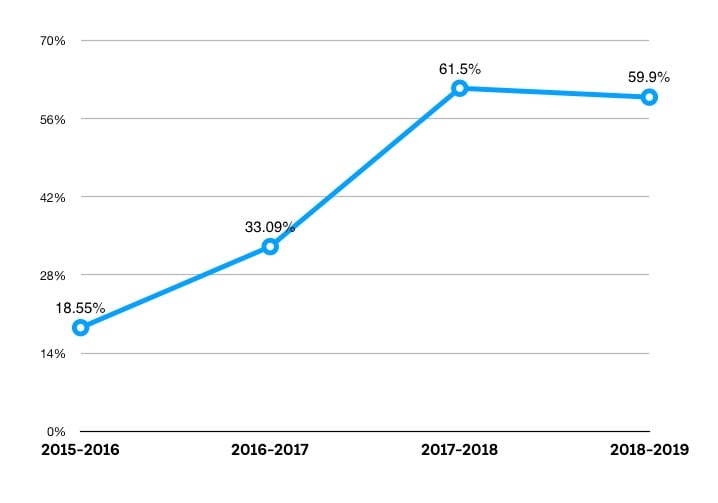
Here you can see the change in renewal rates over time. The 2018-2019 metric means that out of every customer who purchased a license in 2018, 59.9% of them renewed that license in 2019.
Of course it’s disappointing to see the renewal rate drop, but considering industry averages I’m not sure there’s much we could do to push it higher, and I’m personally quite satisfied with 60%.
The biggest cohort who didn’t renew their licenses this year were the Black Friday customers from 2018. I think it’s likely many people bought WP Fusion at the time because of the short window for the discount, and when time came up for renewal they had to evaluate whether or not it was something they wanted to continue paying for each year.
If that’s correct then we should expect to see another drop in overall renewal rates for 2020, since Black Friday was so strong in 2019. We’ll be sure to include some more insights on that in next year’s report 🙂.
#Churn Rate
Another way of looking at customer retention (which is far less subject to methodology) is to grab our churn rate out of Stripe.
For 2019 WP Fusion had a 3.19% churn rate among our Stripe subscribers.
Considering industry averages suggest a 5% churn is healthy, this feels like we’re doing a pretty good job of providing the features and support needed to retain our customers.
#Support Insights
Across email support (via HelpScout) and chat support (via Chatra) we had 3,614 support conversations this year, with 6,929 messages received.
That’s a 67% increase in support volume over 2018, which makes sense as our customer base grew significantly this year.
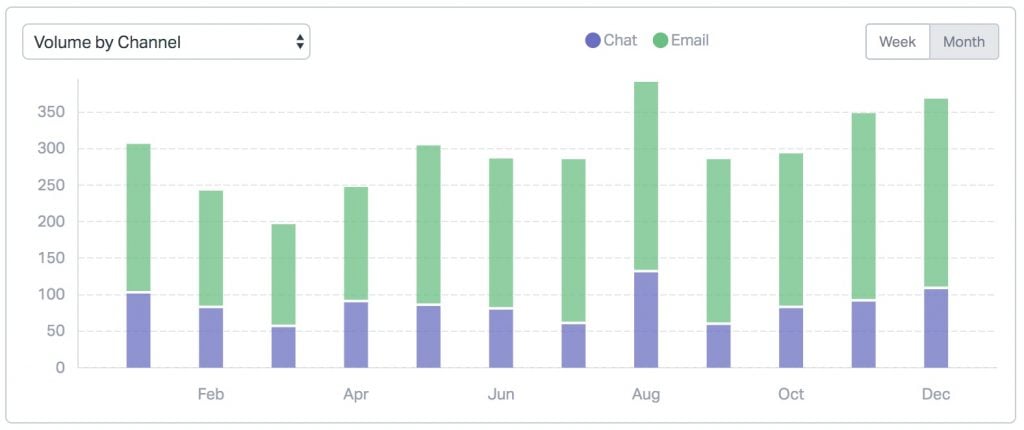
Here you can see our support volume by month and channel (ticket vs live chat). This tracks pretty well with our revenue numbers for the year, as the beginning of 2019 was pretty slow but had picked up significantly by August, and of course November and December brought in a lot of requests during and after the Black Friday sale.
#Response Times
Response times for support is very important to me. There’s nothing I hate more than sending in a support ticket and then having to wait a week for an answer. Especially if you’re building a project for a client, or trying to complete something on a deadline— being unable to get timely support slows the whole project to a halt.
In 2018 we had an average 3 hour, 50 minute response time to all messages, and a 1 hour 38 minute “first response time” to new tickets.
Here are our numbers for this year:
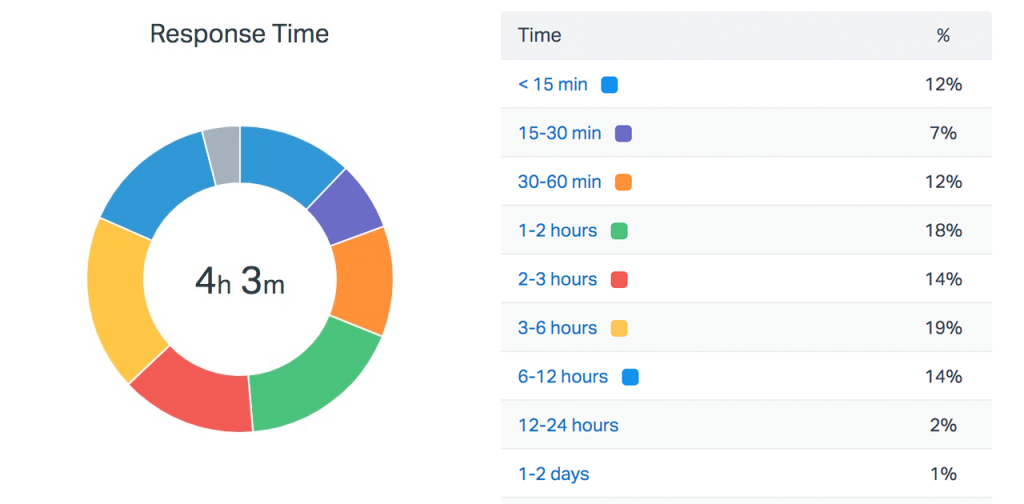
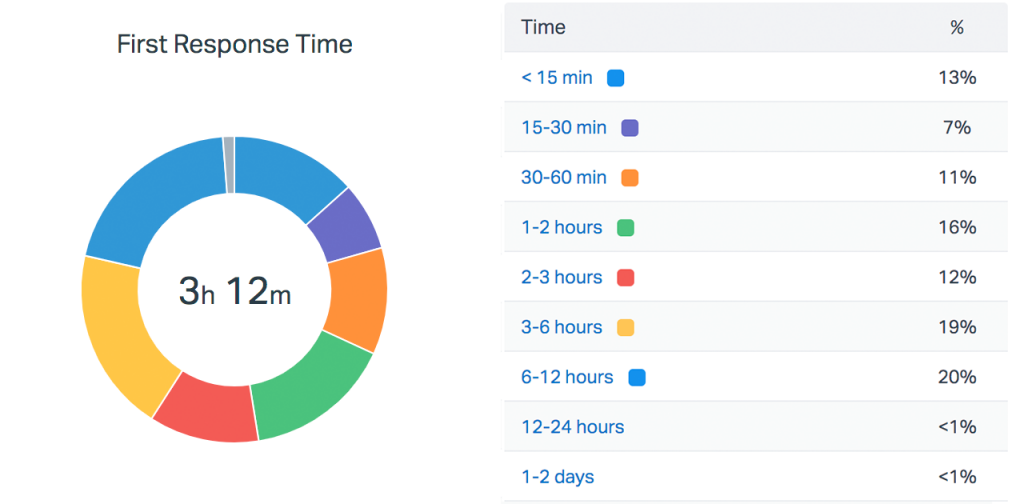
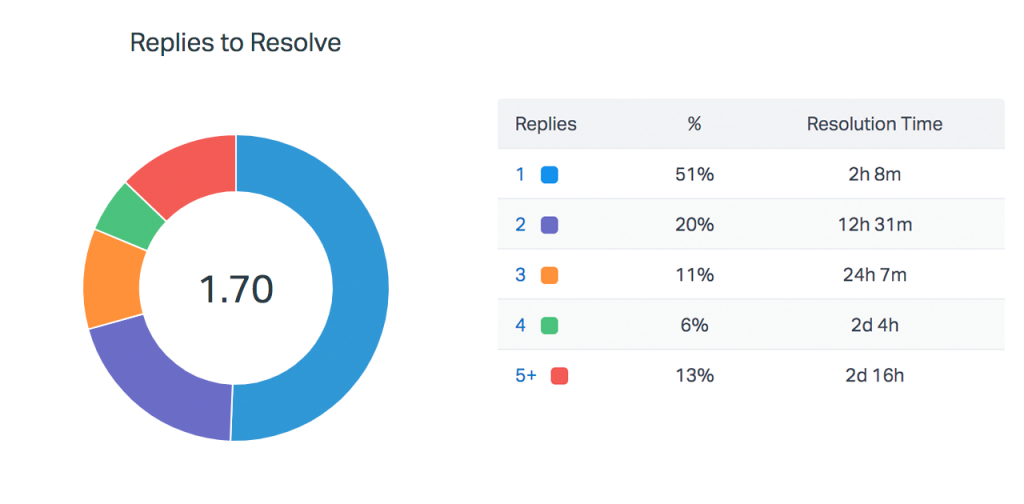
Our overall response times stayed about the same between 2018 and 2019, though the First Response Time increased pretty significantly.
I’m not quite sure why that would be as we haven’t had any real changes in how we handle support tickets.
It could be related to my move to Germany in June of this year and not properly updating the time zone / business hours settings within HelpScout. But that’s definitely something we’ll be keeping an eye on, as the first response time really sets the tone for the rest of the support experience.
#Other Stats
WP Fusion Lite: The free version of WP Fusion on wordpress.org passed 1,000 active installs in December. Woohoo!
Facebook Community: Our Facebook group, Marketing Automation for WordPress with WP Fusion, more than doubled in size in 2019 and now has 855 members.
I am so grateful to the group members who keep coming back and helping others, swapping recipes and tricks, and giving feedback on ideas and new features. At the risk of leaving anyone out I won’t list them here, but you guys know who you are, and it’s really appreciated! ❤️
#Web Stats
Our web stats were solid for 2019. I saw a notable decrease in bounce rates and increase in conversion rates after the new site rolled out in the fall.
Organic search was still the strongest driver of traffic and revenue (47% of revenue).
To try and bring in more of that search traffic in 2020 I launched an experiment in December where our site auto-generates pages that combine the various plugins WP Fusion supports with the various supported CRMs.
Similar to the way searching for any two services together on Google inevitably brings up Zapier as a top result, now searching for a WordPress plugin and a CRM is beginning to bring up WP Fusion as a solution. Some example landing pages:
At the moment there are 2,683 of these landing pages.
So far it’s looking good. They’re beginning to rank highly for certain keywords and have resulted in a few conversions, but it’s going to take some more time to properly gauge their effectiveness.
#Fatal Error Notify
We actually maintain two commercial plugins under the Very Good Plugins banner, the other is Fatal Error Notify.
It’s more aimed at developers and agencies so it doesn’t get the attention that WP Fusion does, but FEN also had a healthy year:
- 6 updates in 2019
- $10,724 in total revenue
- 1000+ active installs of the free version
Most notably we began adding integration modules so Fatal Error Notify can now send notifications based on errors in other plugins. For example Gravity Forms feed errors, or when WP Fusion has an API error.
#Summary and 2020 Goals
2019 was an awesome (very busy) year. And 2020 is shaping up the same way. In the short term I’d like to:
- Finish the CRM integrations with Jilt, SharpSpring, and KlickTipp
- Launch a new lifetime price tier for licenses
- Finish the last part of the site redesign (the customer account area)
In terms of 2020 as a whole… a lot of what we’re doing is responding to customer requests, so it’s hard to predict where that will take us. I would like to see WP Fusion pass $500,000 in revenue for the year, which I think is achievable.
I’d also like to double down on creating training materials and blueprints for new customers. A lot of the features we’re building now are responding to the needs of developers and edge cases, and all of the options in WP Fusion can definitely be overwhelming for a first-time user.
Just because you can do something doesn’t necessarily mean you should, so if we can provide a clear path for people to achieve their goals with WP Fusion it will hopefully cut down on frustration and time spent with support.
Anyway. That’s all I’ve got. Thanks for reading, and best of luck to you all in 2020! 🎉
— Jack Arturo
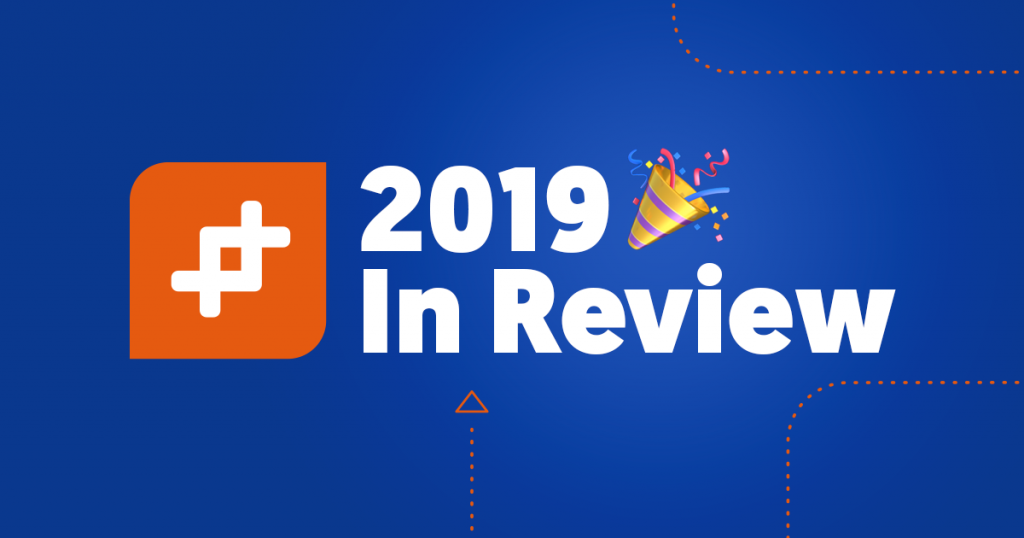
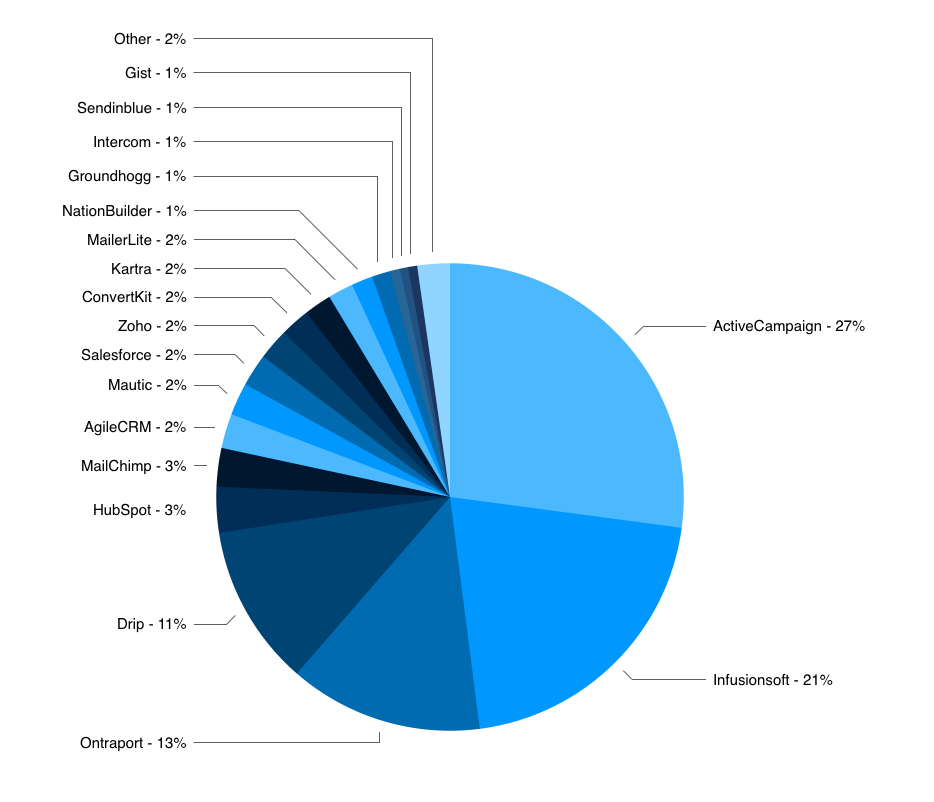
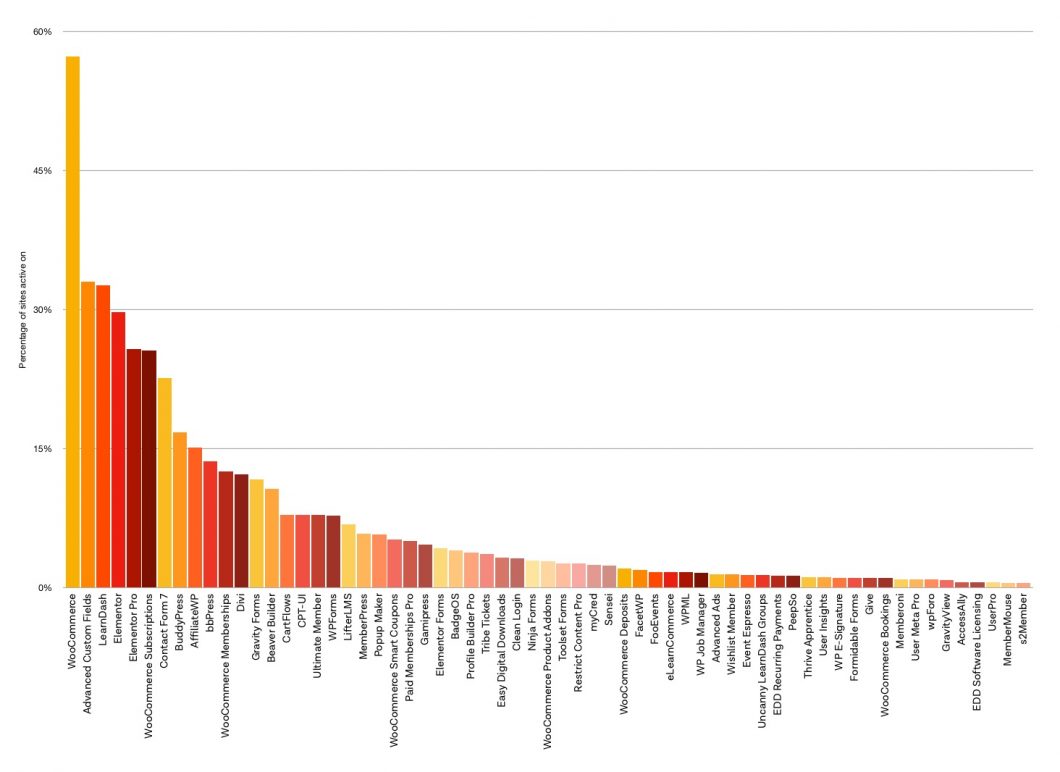
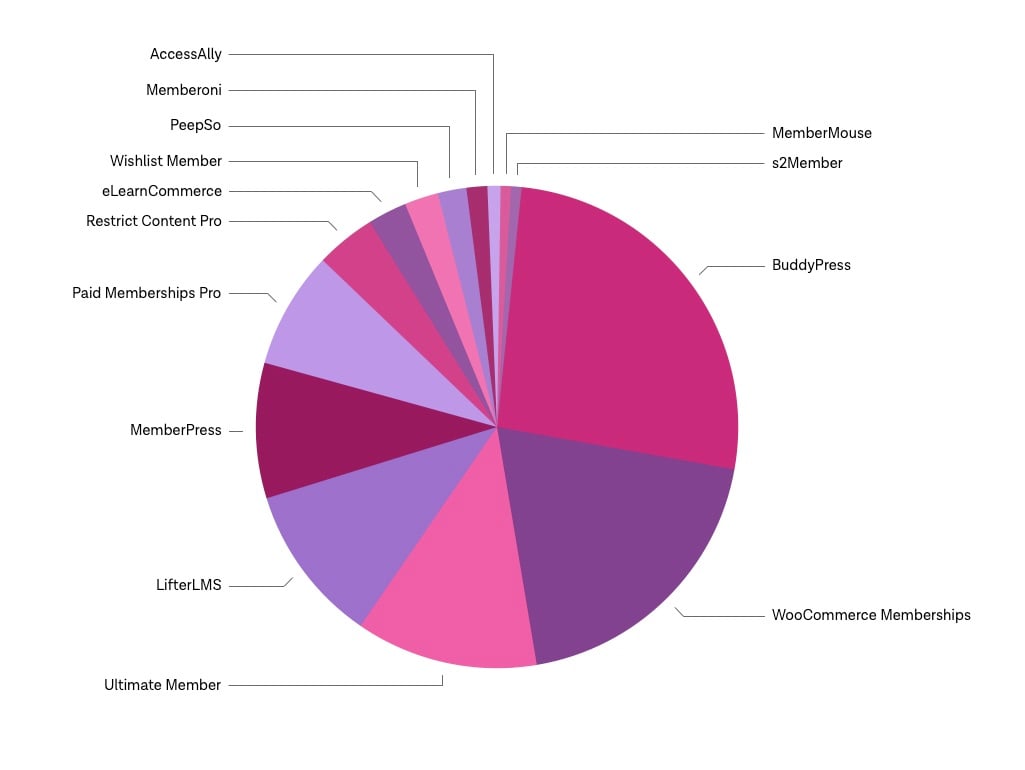
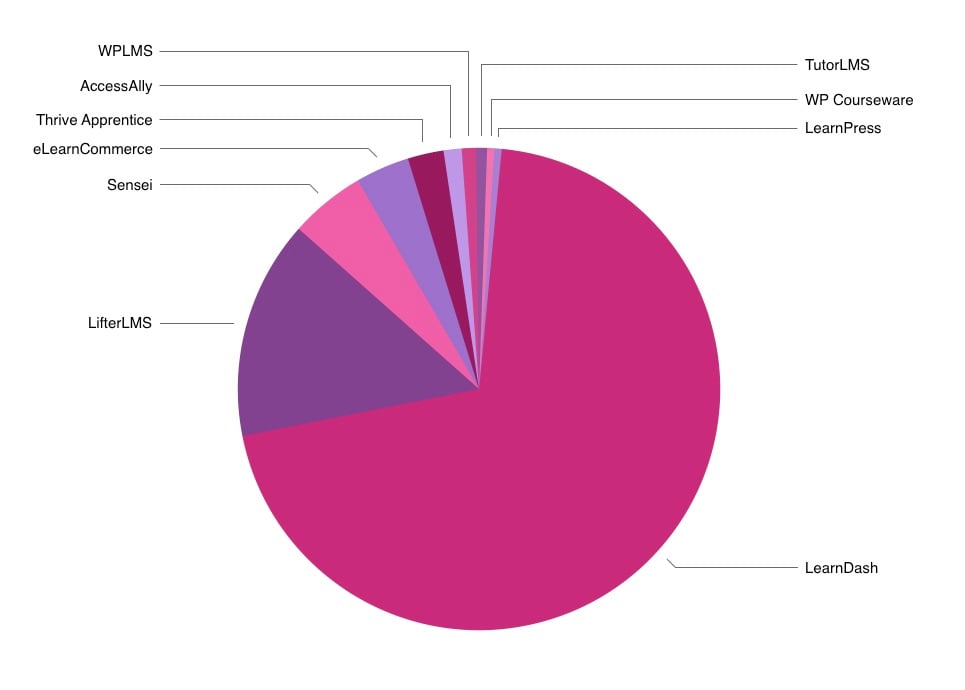
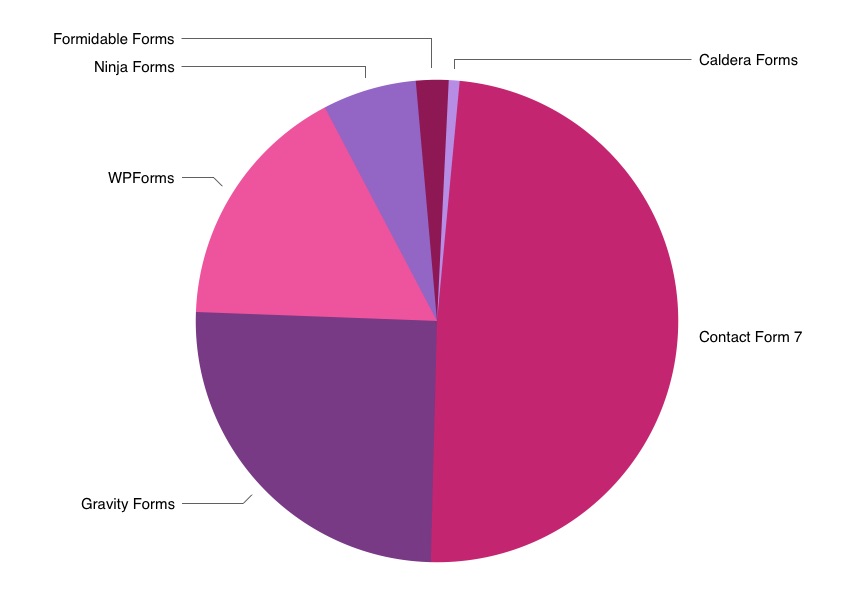

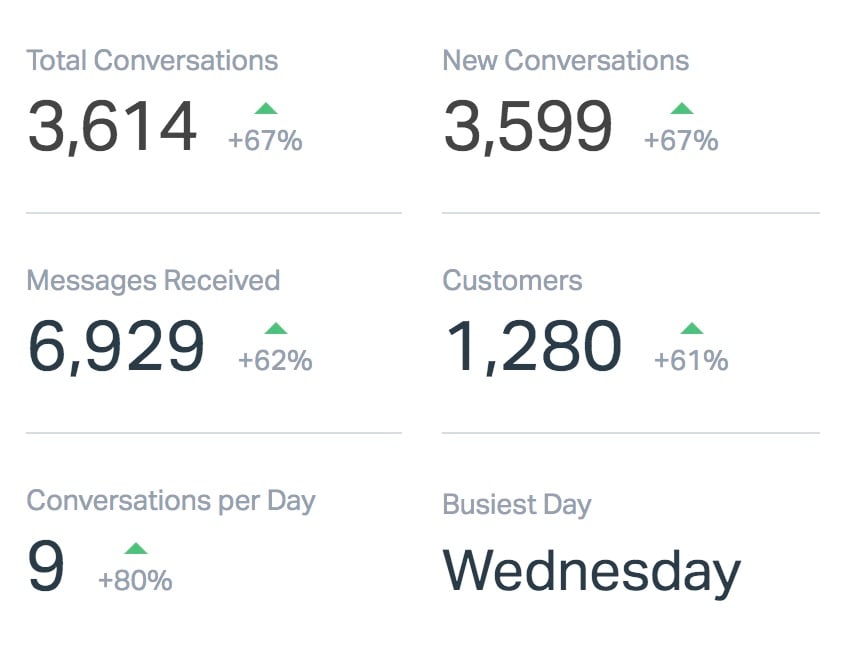


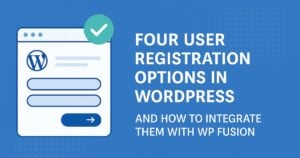


10 thoughts on “2019 In Review”
This kind of transparency is informative to me, thanks!
Great summary. Congratulations on all the successes!
Awesome man! WP Fusion has been great and your support has been Perfect all-around several times!
Jack, very interesting, I bet this post was a lot of work.
This is really smart:
“[…]our site auto-generates pages that combine the various plugins WP Fusion supports with the various supported CRMs.”
Amazing. Just like those Zapier pages when users come from the SERPs. How is the site auto-generating these?
Thanks João! The generation is a manual process, I run it whenever a new CRM is added by pushing a button in the admin. The code is pretty simple, this is all it is: https://pastebin.com/Lsm40mhy
Jack, this was an excellent post. It’s actually the only time I can remember reading the full text of a newsletter that was pushed out to me. Glad to be part of the WP Fusion family.
The auto page generation of plugin/crm combos is especially brilliant…this is something I’m going to try with my site.
Your ongoing development with new features is terrific and much appreciated.
Just keep working on performance and security as they are just as important as features.
Dale.
Jack:
Thanks for this. I’ve appreciated your emails and help as I was working through some big client projects this past year. I also appreciate this insight. I have an idea for a plugin that aims to integrate Stripe with WP in a more developer-friendly flexible way (sort of like WP Fusion does with CRMS) but I’ve been struggling over whether or not starting a plugin business is worth it vs. sticking to client integration projects. This post will definitely help the discernment!
Vielen Dank!
Jack,
I knew when I saw your email, it would be a pleasurable read, and I was right.
I wish other business owners could produce such trust building correspondence.
You number 1 fan
Mark
Hey Jack
I applaud you for writing such a detailed and transparent post. And WP Fusion is growing strength to strength with each passing year.
Congrats for that!
And I tip my hats off to you too. I remember you contacted BirdSend support a few months ago — with at that time only 1 user requesting BirdSend WP Fusion integration, and you immediately agreed and went down to business and actually created the integration.
We had received a few integration requests for WP Fusion too and were going to integrate with you guys, but you beat me to it — which actually saves us time — so thanks for that too!
Keep up the awesome work and here’s to an even more fantastic 2020 for WP Fusion!
Welly